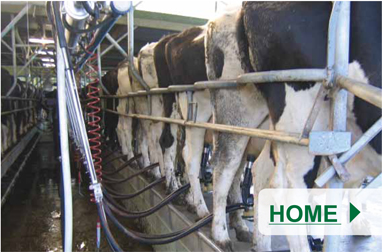As the world reduces chemical antibiotic and drug use in man and animals, biotechnology has started to provide the solutions for new products based on natural extracts additives and new functional materials. The world is moving towards biofriendly products which preserve the environment, promote renewal, increase health and pose no bio or eco threats.
Biotechnology provides new product solutions for traditional farm problems. Agriculture which is a biodiverse business is quickly changing because of the impact of biotechnology. Foods which provide a physiological benefit as well as a nutritional outcome are called prebiotics and are at the leading edge of the advances in bioscience. Prebiotics enable animal health and welfare to move from cure to prevention.
Prebiotics which are non digestible carbohydrates are now used in farming to reduce infection and disease, reduce feed costs, increase health appearance of farm animals and increase natural production. Prebiotics exist naturally but require specific crops to be grown. This is makes the feed source seasonal adds a new element to feed management increases the task load and reduces available pasture. Modern production methods extract and concentrate prebiotic carbohydrates so they can be added to animal diets in a safe, non toxic easy to use way.
All living mammals are built up from the same basic materials, they function in a similar way and are controlled by the same biochemical reactions. One of the key processes of the living body is the digestive system. It is the food conversion and distribution unit which supplies all the nutrients the body needs to grow and function. If this system is run down then the animal has to devote more of its energy to repair and rebuild instead of natural production.
The digestive system is made up of three seperate food process system-acid, enzyme and fermentation. The fermentation system produces natural antibiotics, detoxifying and cell repair agents and has a profound effect on how well the body functions. Some of the production of these agents takes place in the lower digestive tract.
The health of the lower digestive tract is often overlooked but its dysfunction results in many avoidable animal health problems. The impacts range from high mortality rates in newborns, lower conception rates, lower growth rates, reduced levels of production, disease and infection, methane emissions and increased waterway contamination.
When food material enters the lower digestive tract it is decomposed by specific carbohydrate reducing bacteria. The biochemicals that are produced by this saccharolytic fermentation are the natural antibiotics, detoxifying and cell repair and immune response agents.
These carbohydrate reducing bacteria can be greatly reduced by sickness or stress and the lower digestive tract becomes overpopulated by pathogenic bacteria such as listeria, e.coli, salmonella. This type of bacteria degrades any protein present to produce toxic biochemicals usually phenols, amines and ammonias.
Prebiotics help the animal restore the digestive process back in favour of saccharolytic fermentation. An improvement in health, well being, feed efficiency and natural production are the outcomes of better digestive function. Toxic bacteria are purged from the digestive tract by a process called competitive exclusion. Contamination of waterways by faecal bacteria is reduced.
By making the digestive process function more effectively there are other less visible benefits but which are part of everyday farm life.
When the nutritional value of pasture falls because of weather conditions, the animals can still process what food they take in to get the maximum food value available. This has direct links to feed costs, feed and pasture management.
Herd health can be safeguarded as the risk of infective
disease transfer is reduced.
There is an economic value to improving herd health,
increasing feed efficiency and reducing disease risk.

